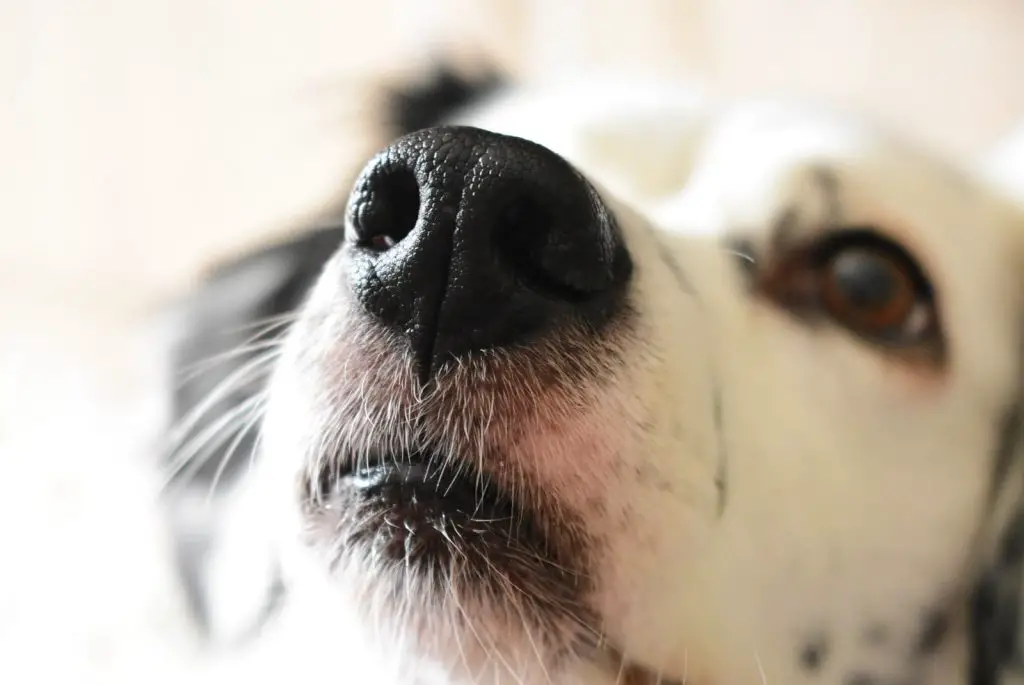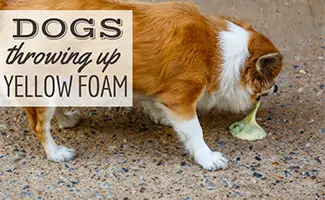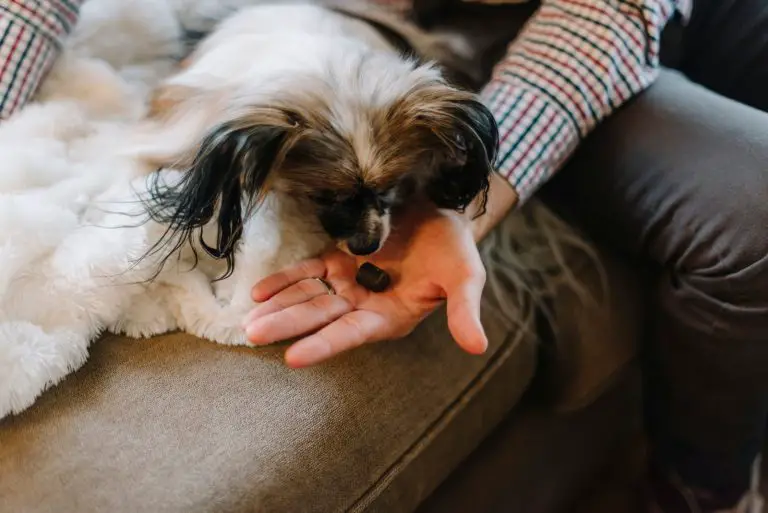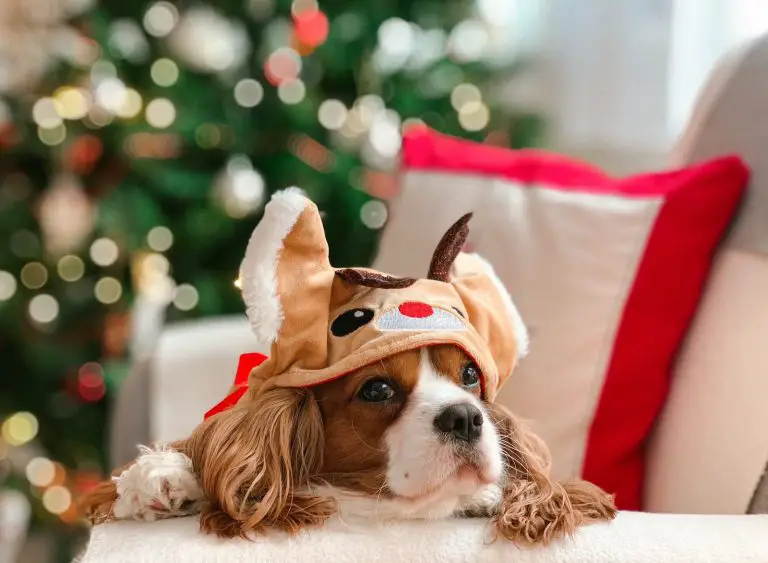If you are wondering that why my dog won’t eat after surgery, then you are not alone. Almost all dog owners find it difficult to feed their canine post surgery.
The post-surgery phase can a difficult time for your canine companion who has gone through a procedure. Since even some noninvasive methods require anesthesia, your pet can go through a period of induced slumber.
And it’s the terrible feeling of waking up after such a procedure that gets even grownups down. So, where your dog is concerned, it is normal for them to act strange when they wake up.
All dogs are different, and so is their reaction to surgery. Many dogs can quickly shake off the effects of anesthesia, while others require some time before they start behaving like themselves.
Some dogs may just want to sleep, while others may want to cuddle up with their human parents. Some dogs may cry, while others may just want to be left alone.
Breed plays an important role here, and even the size of your dog and age can be contributing factors to their fast recovery. It’s vital to assess the situation and behave accordingly to make sure that your pet stays as comfortable as possible after surgery.

Why My Dog Won’t East Post Surgery?
Even though most dogs behave differently post-surgery, a common symptom that all dogs face is the lack of appetite. “My dog won’t eat after surgery” is a prevalent complaint that many pet owners voice after their dog undergoes a procedure. It is essential to know that some painkillers and medications can cause your dog to lose their appetite.
There can be other reasons as to why your dog may be refusing to eat food, but whatever the reason, you have to make sure that they get the essential nutrients required to make a speedy recovery.
The lack of appetite post-surgery can be dangerous. Search engines are full of queries about “my dog won’t eat after surgery” because many pet parents feel helpless in such situations.
But don’t worry. It is common for dogs to lose their appetite after surgery, even though it is not preferred. Your dog can go without food for 24 hours, and if your dog was under anesthesia, it is recommended not to feed them for a few hours.
Recovery after surgery can be stressful. How can you make sure that your dog doesn’t face adverse effects post-surgery and gets the nutrition it needs to recover?
Finally, your answer to why my dog won’t eat after surgery can be found in this video.
How to Feed Your Dog After Surgery?
Here are a few tips that’ll help your dog eat after surgery, once you get the all-clear from the vet.
If your dog has undergone a procedure for digestive issues, it may be dependent on a feeding tube. A feeding tube leads directly to the dog’s stomach, so it’s easier to feed them.
You’ll need to keep an eye on the consistency of the food so that it can easily pass through the tube. Liquid diets heavily moisturized dry food, and wet food is appropriate for your pet during this time.
All you need to do is make sure that the food is of the right texture and is the perfect size to pass through the tube without blocking it.
If your dog doesn’t have a feeding tube, it can be a bit difficult to feed them. Your dog may not feel like eating, but its body still needs the energy to perform daily tasks.
It can be heartbreaking to see your rambunctious dog suddenly down in the dumps, and unless you feed it in time, its condition can deteriorate rapidly.
So you need to be vigilant and do everything in your power to make sure that your dog eats food. It’s essential to ask your vet about the perfect time to start feeding your dog so that it doesn’t interfere with the healing process of your pet.
Your vet will recommend the minimum time your pet needs to recoup and how you can help accelerate the process, without compromising on your pet’s health.
Here are a few tips that’ll help your dog eat after surgery, once you get the all-clear from the vet.
If your dog is feeling groggy after anesthesia or the medication doesn’t leave a good taste in its mouth, then it will ignore all your attempts to feed it.
A simple yet effective trick is to heat the food. That makes the food more delicious, and the tantalizing aroma that surrounds your pet will ensure that it eats the food that is placed in front of it.

However, all dogs have dietary preferences and might not like hot food. In such a case, it’s better to just stick to what you have. In this case, you will have to make the food tempting.
Get creative, and soon you’ll see that your pet won’t be able to hold back. Use this trick to help them overcome nausea for a fast recovery.
Adding your dog’s favorite flavor to the food may increase the chances of your dog eating food post-surgery. It is not advisable to give your pet a full-fledged meal right after surgery.
The vet might recommend a light meal schedule, so it’s essential to follow it. This will ensure that your pet gets enough time to recover before taking on the usual dietary routine.
If your dog refuses to eat anything, then all you need to do is add some flavor to the bland food. The addition of flavor will entice your pet to take a bite even when it feels down.
It’s better if you hold off introducing new flavors until your dog has recovered. This can be overwhelming for your dog’s digestive system and may turn out to be more of a nuisance.
You can always opt for manufactured convalescence foods as they are specifically designed to support your pet’s recovery process.
You might want to reward your canine companion with its favorite snacks; however, you should wait for a couple of days before resuming the usual eating schedule.
Feeding your pet anything too rich so soon after the surgery can affect the recovery process. Since the after-effects of anesthesia include nausea, it wouldn’t be wise to give your pet a heavy meal so soon after the surgery.
Since it’s common for pets to experience a lack of appetite and turn away from food, you don’t need to go all and above to prepare some delicacy. Those Scooby treats can wait!
Some boiled chicken or rice cooked in meat broth is the best remedy to make your pet feel better. They are bland enough not to cause any digestive issues, and the best part is that they are delicious, so your pet won’t be able to say no.
After surgery, you wouldn’t want to have a three-course meal, so don’t expect the same from your canine companion. It’ll take a while for them to return to their old, cheery self, and till that happens, you may have to reduce their portion size.
Dogs must get the essential nutrients— but not at the cost of their health. Opt for smaller portions that your dog can easily digest. You can give them a quarter of their regular diet for a few days or until the vet recommends.
Being a pet parent comes with many responsibilities. If your dog doesn’t give in to any of the above tips, it’s time to take matters in your hands, literally. If your dog likes kibble, you can try hand-feeding as an alternative.
You can also feed them canned food by hand, as long as it has a semi-thick consistency. It’s better to visit a vet before you make any decisions.
There’s a unique trick to hand feeding, and you need to try it out first. Just dip your fingers in the canned food and slowly take them near the mouth of your dog. Once your pet gets a sniff of the food, it’s likely to trigger their appetite.
You can try dabbing a bit of your food on the dog’s lips and nose. This step will encourage your dog to clean it off by licking, which will ensure they get a taste of the food.
Sometimes, just getting a taste of the food can lure your pet into trying a mouthful. Once your dog tastes the food, it will realize that it was hungry all along and finally eat.
Another great way to feed your dog after surgery is to divide the food into small condensed portions— as mentioned above as well. This enables the dog to eat quickly, without affecting the stitches from the surgery.
Finally, check the video on how to hand feed your dog.
As a worried pet parent, you may force your dog to eat. While you may have its best interests at heart, the vital thing to remember here is that your dog has been through a painful experience and maybe down in the dumps.
All your efforts of force-feeding will amount to nothing, and it can be a cause of distress to your pet. Instead of force-feeding, it’s better to give all the above techniques a try. If not all, one of them is bound to work out in your favor.
Surgery is a taxing experience. After surgery, vets recommend that you change your dog’s diet to a high-fat diet. Such a diet helps to fulfill the daily energy requirements. This way, your dog can get the required energy from smaller portions, and it’ll waive off the strain that eating a large meal will have on its digestive system.
However, this recommendation is solely based on your pet’s health concerns. If digestive issues are the primary reason they underwent surgery, it’s likely the vet will put them on a low-fat diet so as not to aggravate the situation.
As the recovery process begins, you’ll need to make some due changes. “My dog won’t eat after surgery” is a common complaint, and to ease the recovery process, you will have to make changes to your dog’s diet as well as how you feed them and place their food and water bowl.
To help your pet eat more comfortably, you need to make sure that food is easily accessible to them. If their food or water bowls are placed higher than they can reach in their current state, they’re likely to ignore food.
Although it’s usually recommended to put your pet’s food higher since the gravity helps move food to their stomach faster, this strategy is not recommended post-surgery.
Place both bowls near the dog’s bed, so as soon as hunger strikes, your dog will get right down to business. If you have a smaller dog, it’ll be easier for you to just hold them up in your arms as you feed them. It’s all about making things easier for your dog so that the stress and trauma of surgery don’t get to them.
These helpful tips will ensure that your dog starts eating soon after surgery, without compromising its health. Sometimes dogs don’t eat after surgery because they can’t eat. The pain can render them incapable of eating, and it’s better to let them rest for a couple of hours after they get home. Let them get a sense of security in their home because it can sometimes help shake off the blues.
Finally here is a video that answers the questions how to feed your dog post surgery.

How to Feed a Dog With a Cone Collar Post Surgery?
When discussing the ‘can’t eat’ element here, it’s essential to see what role dog cone collars play here.
If your dog has undergone an invasive procedure, the vet will recommend a dog cone collar to prevent your pet from biting or licking the wound. Though this collar is of great help, it can sometimes constrict the movement of your pet.
But since it’s crucial to keep it on at all times, especially when the dog is alone, you can’t take any chances. Opt for dog collars that are specially built for your dog’s size specifications.
If you don’t opt for the right size, your dog will encounter problems while performing daily tasks such as eating and drinking. That’s why it’s vital that you go for a cone that’s suitable for the breed and can keep up with the daily activities of your pet.
Here are the different types of dog cone collars and which one you should choose for your dog.
These are a common type of dog cone collars and are most often provided free at the vet’s office. They are suitable for medium to large dogs and are easy to clean. However, there’s a drawback to them too. They can be quite uncomfortable for your pet because of their hard material, and dogs can take it off quickly.
These look like a donut cushion, and since they are inflatable, they can fit dogs of all sizes. The inflatable plastic makes sure your dog is comfortable, and the shape makes it harder for dogs to take it off. They may not be suitable for injuries on the tail or backside as most big breeds will be able to reach the wound in spite of the inflatable cone.
This one is shaped like an e-collar, but the only difference is the material used. Fabric e-collars are made of padded nylon and are perfect for medium to large-sized dogs. They may be hard to clean, but the soft material that they are made of allow your dog to move around comfortably.
Patience Pays Off When Trying to Feed a Dog Post Surgery
You may feel all alone in your efforts to get your dog to eat post-surgery, but don’t let it get you down. Remember that other pet parents are going through the same phase. All you need to do is follow the advice given in this blog.
It’s essential to have patience during the whole process as your dog will need time to feel better. All your efforts will be wasted if you lose determination along the path and give up.
‘My dog won’t eat after surgery’ is a common complaint among pet owners. This blog offers excellent advice and usable tips that can make life easier for both you, as a pet parent, and your canine friend.
Equipped with in-depth knowledge about what to do post-surgery and how to do it, you can fulfill your duties as a responsible pet owner and play your part in the speedy recovery of your dog.
In the end, it’s important to remember that your dog has access to clean drinking water so that dehydration doesn’t come up as a potential threat to them in their current state. Apart from that, as long as you follow the above-given steps, you’ll be able to slowly bring your dog back to its usual, playful self.







